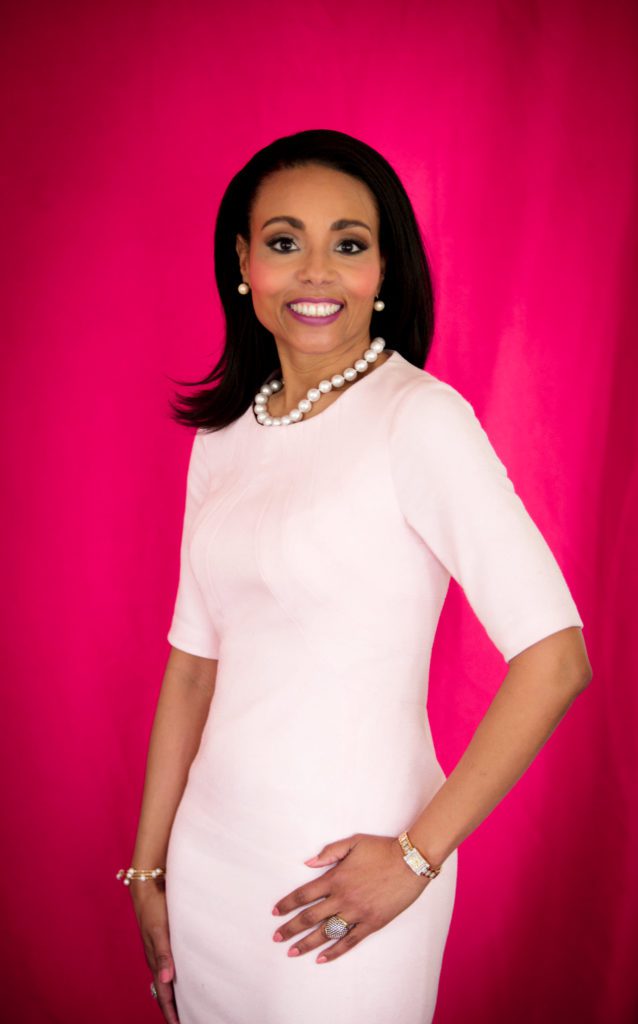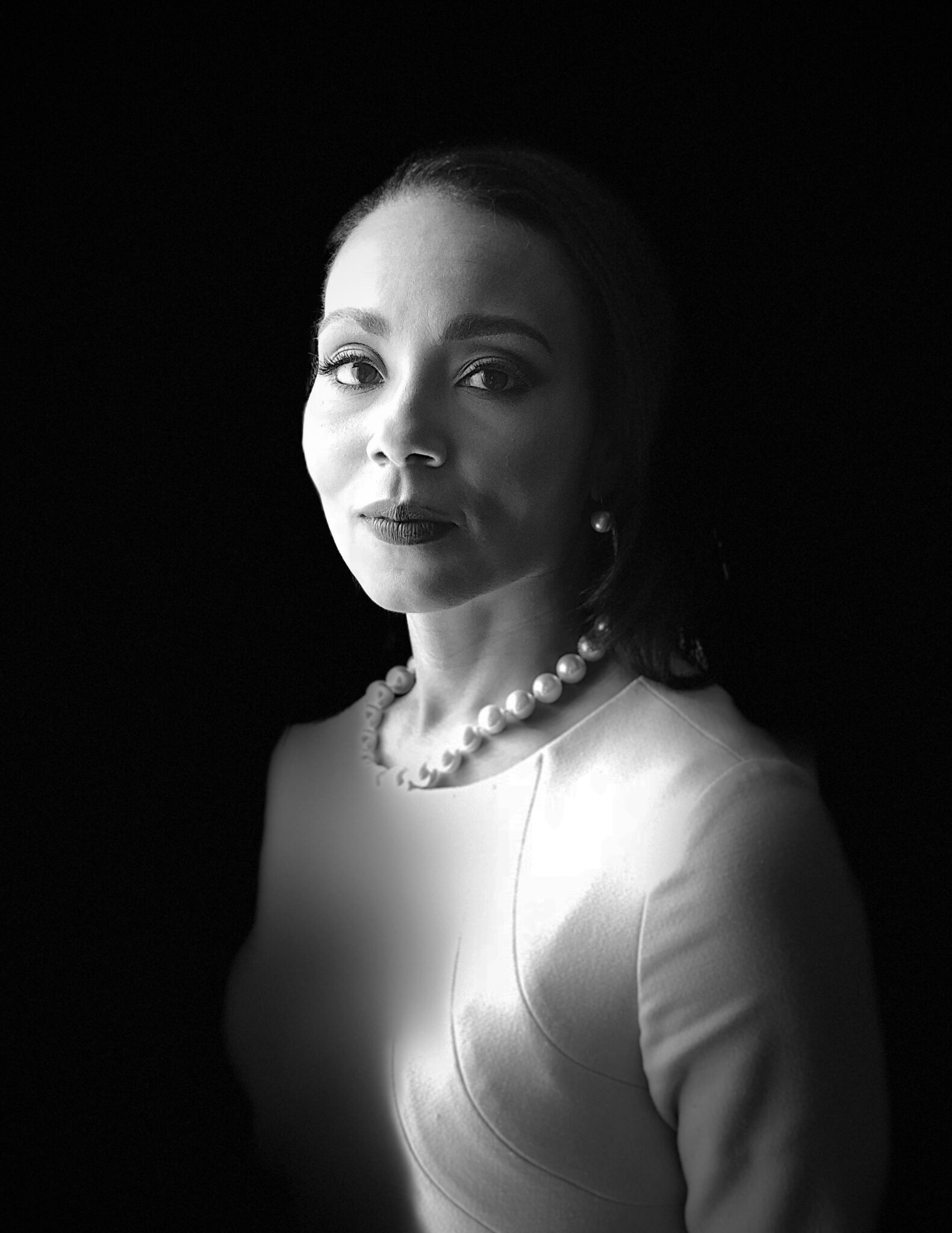New President at D.C.’s Junior League: Time-Tested Volunteer Organization Stays Involved, Keeps Evolving
By • July 25, 2018 0 3168

Tycely Williams is the new president of the Junior League of Washington, a 106-year-old branch of the Junior League — now the Association of Junior Leagues International —which was founded a dozen years earlier in New York. She represents the dynamism of the organization, the mission of which is to develop the potential of women and improve communities through the effective action and leadership of trained volunteers.
Williams is totally committed to JLW’s values and goals. “But I am also pretty much everything Junior League presidents in the past were not,” she says with a smile.
The walls of the league’s elegant headquarters at 3039 M St. NW are almost completely covered by portraits of past presidents. “But I am the first brown girl on these walls,” Williams said. “I am also among the first JLW presidents who is divorced, doesn’t have children, has a master’s degree and is still involved in an almost 20-year-long career.”
Williams’s skills and background perfectly fit the evolving Junior League.
“People used to think of Junior Leaguers as society women who played bridge, wore pearls and put on fancy parties for themselves and their circle of influential citizens,” Williams said. “Well, yes, I like jewelry and pearls. But what I love most is helping our communities and building and training our increasingly diverse membership.”
Williams joined the Junior League in 2006, after finishing her master’s degree at Georgetown University and settling into a management career with the American Red Cross, the YMCA and then the YWCA. Her inspiration came from civil rights activist and poet Maya Angelou, who was her English teacher at Wake Forest University in North Carolina. “Miss Angelou continually told me, ‘Miss Williams,’ about the importance of courage and joy and to be involved in others’ lives,” she said.
“Miss Williams” found the Junior League of Washington to be the perfect place for her desires for service and connection.

Photo by Philip Bermingham.
Booming Membership Selected by Lottery
With more than 2,350 members, the Junior League of Washington is one of the 10 largest leagues, out of some 300. Its membership is increasing every year, both in size and in diversity.
Traditionally, Junior Leaguers were married (often to businessmen and other community leaders) and between the ages of 20 and 40. They generally had small children, did not work and wanted to spend some hours outside the home in social and community activities.
Today, JLW gets hundreds of membership applications each year from women in their 20s who want to join soon after college, at the beginning of their careers. There is no age limit nor social profile to be a Junior League provisional member, and then to move up to active and sustaining status, as there used to be — although some chapters still limit actives to age 45 or so.
Christakos dates the JLW membership boom to the year 2000, when — under the stewardship of Georgetowner Frida Burling — its historic headquarters was completely refurbished into a two-story home with beautiful, high-tech meeting rooms, parlors, kitchens and patios.
But the boom must also be attributed to Tycely Williams, whose goal is to increase membership diversity of all kinds. (She’s not sure if they’re ready for men members as yet, despite some inquiries.)
“We’re now seeing over 500 applications a year for provisional classes of up to 350,” said Christakos. “We’re now hosting many open houses, so that potential members can visit and ask questions before applying. And while legacy applicants get some priority, all applications now are selected by lottery.”
Increasingly, Junior League members look upon their volunteer experience as a way to enhance their professional resumes while improving their communities. The evolving Junior League of Washington, with diverse leadership from women like Tycely Williams, is on the edge of that wave.
Literacy and the National Book Fair
Each chapter can choose its own focus. The only strict requirement at JLW is that active members pledge to be involved in partnership projects for at least seven years. That includes participating in extensive hands-on development and training workshops, a leadership institute and a “get on board” training. Almost 33 percent of the members end up actively serving on nonprofit boards throughout D.C.
“Until the 1980s, Junior League projects mainly dealt with women and children,” said Constance Christakos, a past president, 30-year member and high-profile leader in Georgetown. “It was then that we did a breakthrough project called ‘Boarder Children’ to help small children and mothers with HIV. From that, league volunteers became well- known as proficient board members and event organizers for a wide range of projects.”
Currently, the Junior League of Washington members focus their financial and volunteer resources on adult, child and cultural literacy. The branch is a major supporter of the National Book Fair every fall, supplying not only some 600 volunteers during the days of the show, but also for months before, putting their skills in event management to good use.
“In 2003, when I was JLW president, I decided to make a cold call to the White House to see if we could help with the second year of first lady Laura Bush’s National Book Fair on the Mall,” said Christakos. They said yes, and I marched in with my Junior League event planner, including fund raising, budgeting and volunteer logistics. We have been welcomed ever since.”
In 2017-18, JLW awarded some $125,000 to programs focused on child and adult literacy and workforce development. It is a major supporter of the Meg Graham Scholarship and of Resolution Read. League volunteers spent almost 5,000 hours of volunteer time last year reading to children through the District.
In addition, JLW convenes community roundtables year-round to address specific pressing issues in D.C. In 2016-17, roundtables were held on STEAM — science, technology, engineering, arts and math — education and on how cultural and community organizations can collaborate.

